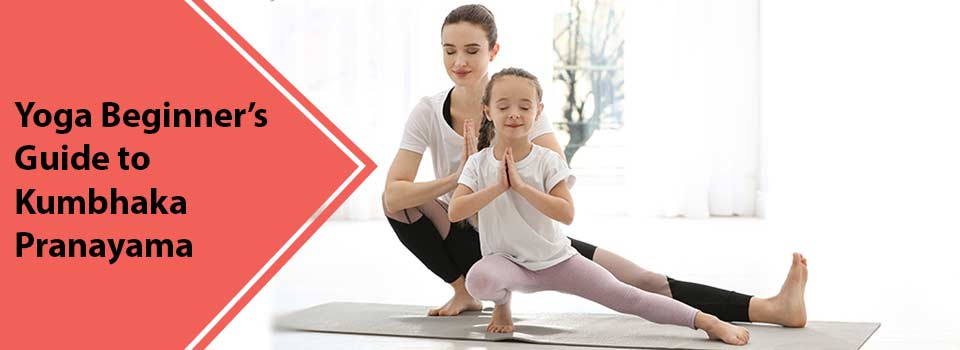Yoga Beginner’s Guide to Kumbhaka Pranayama
Pranayama, the ancient yogic technique of breathing helps you experience the full benefits of yoga practice. There are numerous Pranayama techniques like Nadi Sodhana, Shitali Pranayama, and Ujjayi Pranayama among others. One of these Pranayama techniques is the Kumbhaka Pranayama, also known as pot breathing.
As stated above, the word Kumbhaka refers to a pot. It is not just any pot but refers to the human torso as a pot with two interiors. One at your throat and the other at the base of the pelvis.
Interested in knowing more about this powerful yogic breathing technique? The guide below will help you.
Beginner’s Guide to Kumbhaka Pranayama
Kumbhaka Pranayama is practiced in two different ways namely Antara and Bahya. Antara is a Sanskrit word for interior whereas Bahya refers to outer. Both these techniques are practiced on inhaling and exhaling respectively.
How Should I Practice Kumbhaka Pranayama?
The Kumbhaka Pranayama is practiced at first in the 1-1-2 ratio. Whatever you inhale, you have to hold your breath for the same amount, and exhale has to be double the amount.
Once you are comfortable, during the next stage you follow the 1-2-2 breathing ratio, then 1-3-2, and lastly 1-4-2. If your inhale is for 10 seconds, you hold for 40 and exhale for 20.
To make it easier for you to practice this yogic breathing technique, given below are the steps.
Steps to Practice Kumbhaka Pranyama
- Sit in a comfortable meditation position. You can also sit in the Easy Pose. However, if you are still uncomfortable then sit in a chair.
- Make sure your back is straight and aligned with the spine, neck, and head. Place both hands on your knees in the Jnana Mudra. You can keep one hand on your chest and the other on your abdomen. Keep your eyes closed.
- Start with natural breathing. Breathe normally through your nostrils. It helps you gain control of breathing and prepares the body for practice.
- Take a deep breath to the count of five. The counting should be mental. Once enough air enters your body, tuck your chin to your chest in the Jalandhara Bandha.
- Close your nose with your thumb and ring finger. Hold your breath to the count of five.
- Release your hands and lift your head. Exhale through the nostrils at a normal speed.
- Make sure the exhalation takes place for a double count of 10.
- Repeat the same cycle for 10 to 15 minutes.
Any Other Tips I Should Follow with This Yogic Breathing Technique?
Yes, the yoga experts have come up with a few simple recommendations for you to make the most of the Kumbhaka Pranayama technique.
- Practice daily with at least 5 rounds or sessions. Make sure to pause in between each round.
- Also, practice without any strain and to a count as per comfort.
- Start with a count of 5 seconds inhale and 10 seconds retention. Increase slowly by 1 second every week.
However, there are a few limitations that you should keep in mind when practicing or teaching this breathing technique to others.
- Do not teach it or allow children under 12 years of age to practice.
- Moreover, do not practice Kumbhaka pranayama if you suffer from serious cardiac or hypertension issues.
Do you know that Kumbhaka Pranayama offers some major benefits? Yoga experts have come up with a list of the same.
Benefits of Kumbhaka Pranayama
- Daily practice of this yogic technique strengthens the diaphragm when you are holding your breath.
- Deep inhalation increases your lung capacity.
- Kumbhaka Pranayama activates the respiratory center in your brain. The increase in carbon dioxide triggers your brain to inhale more oxygen for interchange and retention.
- This breathing technique relieves the body of anxiety and stress. It clears unnecessary thoughts and also improves memory power.
- The Kumbhaka Pranayama helps you relieve constipation issues like acidity, gastric problems, and blockages among others.
- Practicing this yogic breathing technique under a Pranayama expert helps take off the strain of your body's circulatory system.
- Kumbhaka is the best pre-meditation yogic exercise to do. It calms down your mind and body to prepare for a meditation session.
This is it! The beginner’s guide to knowing what this powerful breathing technique does.
Also Read: Eight limbs of yoga
Conclusion
If you want to practice a yogic breathing technique that offers a plethora of benefits, try the Kumbhaka Pranayama technique. This ancient yogic technique helps rid your mind of all useless clutter and prepares the body to dive deeper into a yoga practice.

